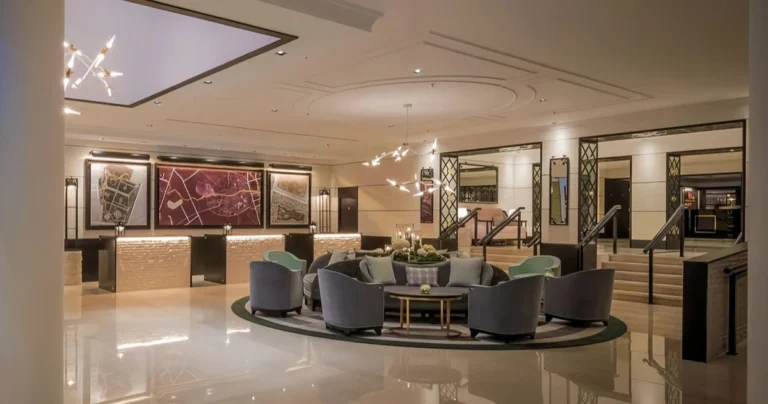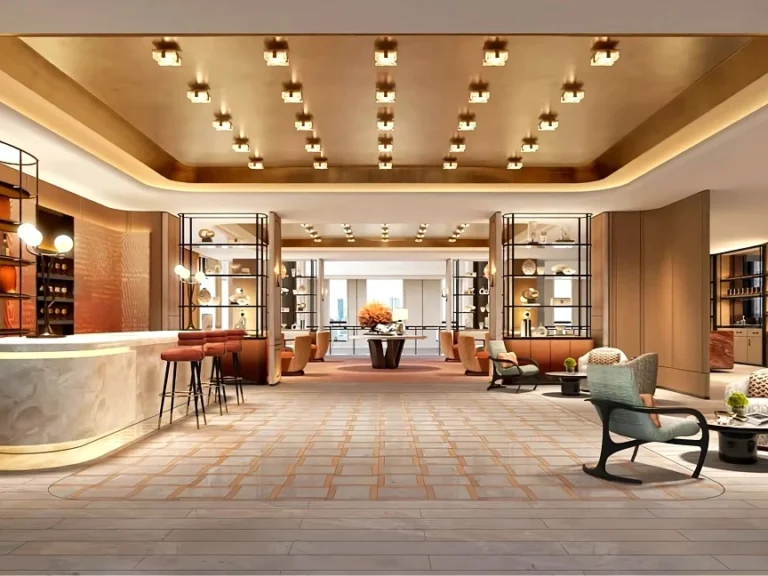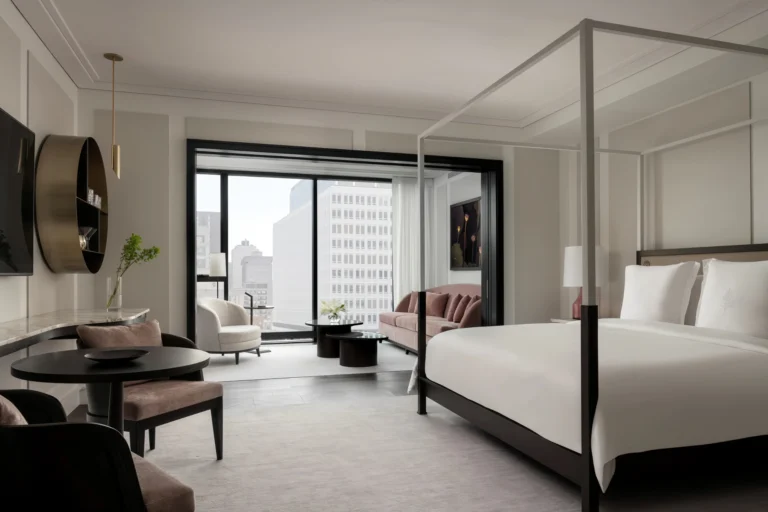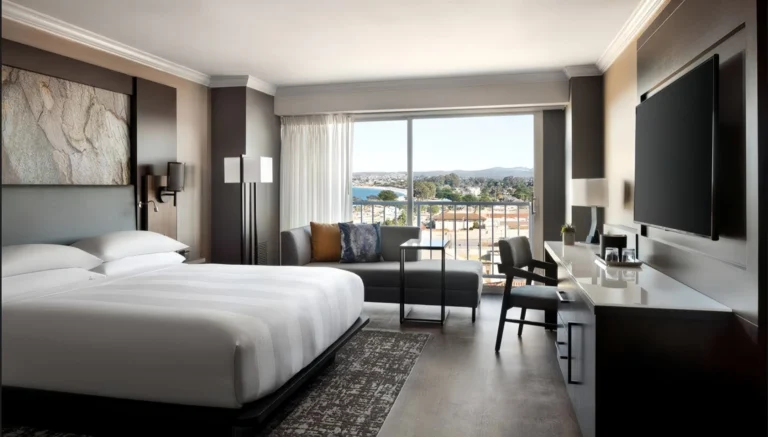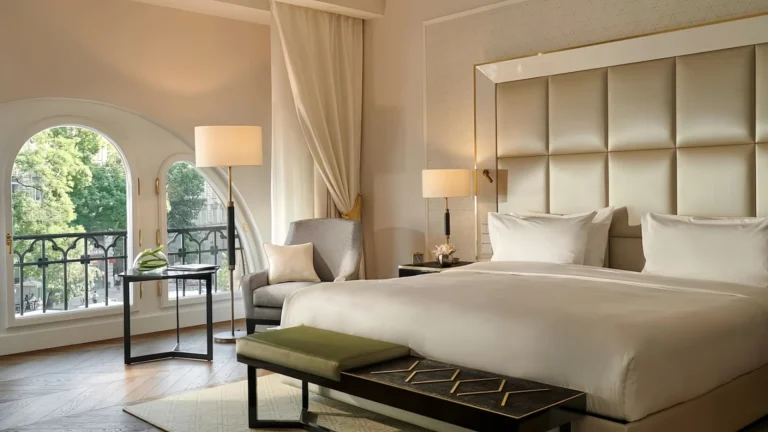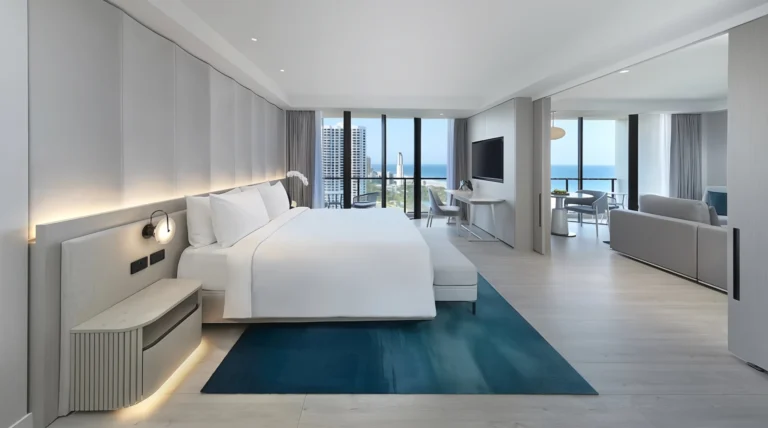In the world of hospitality, boutique hotels have always stood apart from traditional chain properties. They thrive on individuality, creativity, and a strong sense of place. Guests don’t simply check in for a night’s rest — they expect a memorable story, a design-led experience, and a deeper connection to the destination. As travel continues to evolve in 2026, boutique hotel design is set to play an even greater role in shaping how guests feel, interact, and share their journeys.
Why Design Matters More Than Ever
Design is no longer just about aesthetics; it’s about creating emotional touchpoints. From boutique hotel interior design that reflects cultural authenticity to boutique hotel bedroom design that prioritizes wellness and relaxation, every design choice can directly impact guest satisfaction and loyalty. In a competitive market, the hotels that succeed will be those that seamlessly blend innovation, sustainability, and personal comfort.
“Great design in boutique hotels doesn’t just look good — it makes guests feel connected, inspired, and cared for.”
Setting the Stage for 2026 Trends
In 2026, expect to see smarter technology, eco-conscious interiors, and immersive storytelling shaping boutique hotel spaces. Guests are demanding experiences that go beyond a beautiful room — they want spaces that inspire, restore, and connect. This blog explores the upcoming boutique hotel design trends that will redefine guest experiences in the years ahead, offering insights that hoteliers, designers, and brand leaders can’t afford to ignore.
💡Pro Insight: Boutique hotels that weave local culture, wellness, and sustainability into their design will stand out as leaders in the 2026 hospitality landscape.
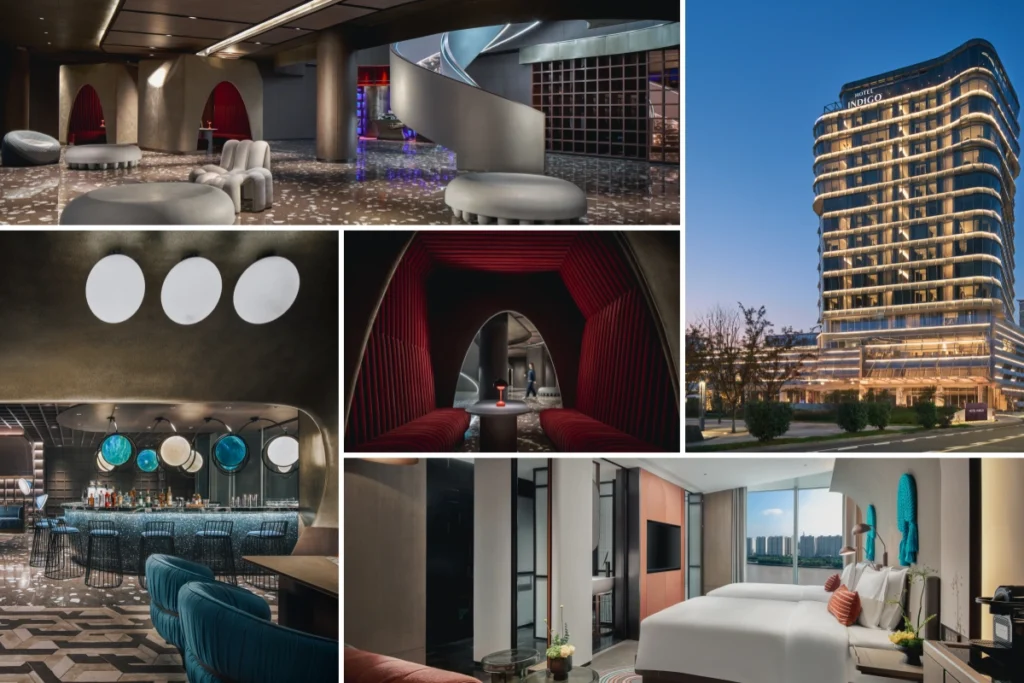
Smart Technology Meets Human Touch
Technology has become inseparable from modern hospitality, but in boutique hotels, the challenge is not just to be “smart” — it’s to be human-centric. Guests in 2026 expect technology to enhance comfort without losing the intimate, personalized atmosphere that boutique hotels are known for.
✨ Personalized Guest Experiences with Smart Rooms
From app-based check-in to digital concierge services, boutique hotel room design in 2026 is evolving to anticipate guest needs. Smart thermostats, customizable lighting, and AI-powered room service recommendations are no longer futuristic concepts — they are becoming essentials.
Imagine a guest walking into their room where the lighting automatically adjusts to their preference, the playlist matches their mood, and the room temperature reflects their previous stays.
🤝 Balancing Efficiency and Warmth
While technology delivers convenience, boutique hotels must ensure it doesn’t overshadow human hospitality. Unlike large hotel chains that rely heavily on automation, boutique hotels can use smart systems to free up staff time for more meaningful, face-to-face interactions.
🛋️ Designing Tech-Integrated Spaces
The role of technology also influences boutique hotel interior design. Smart mirrors, wireless charging furniture, and voice-controlled environments are reshaping interiors. But the key lies in discreet integration: technology should enhance the ambiance rather than dominate it.
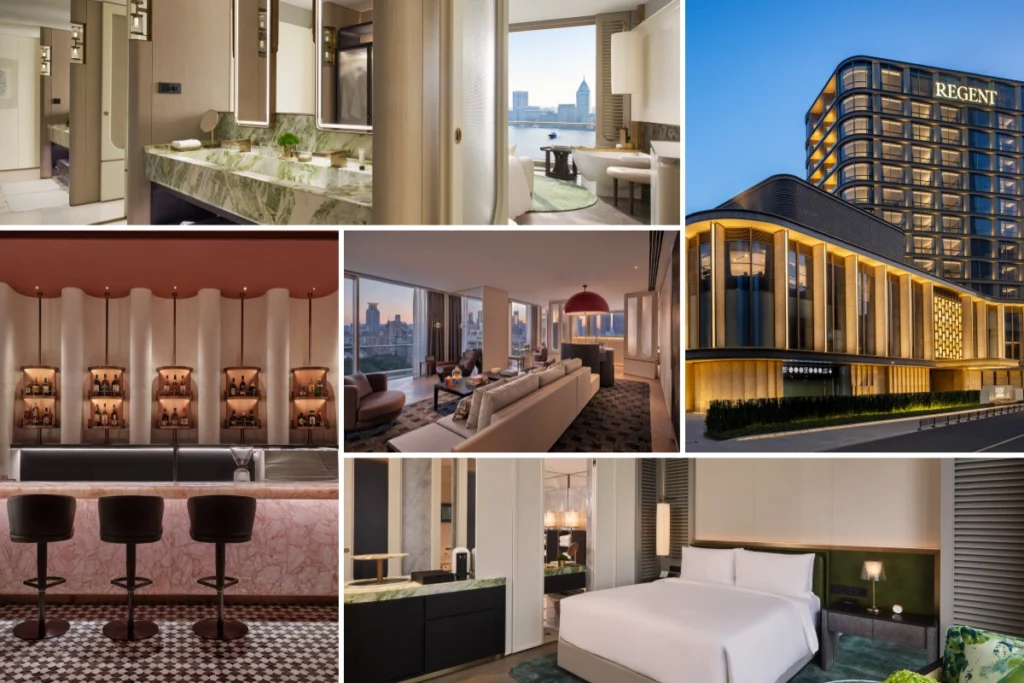
Sustainable Boutique Hotel Interior Design
Sustainability is no longer a passing trend — it has become a core value in hospitality. Travelers in 2026 are increasingly eco-conscious, seeking accommodations that align with their values without compromising on comfort or aesthetics. For boutique hotels, sustainability is not just about reducing carbon footprints; it’s about creating spaces that feel authentic, responsible, and timeless.
🌿 Eco-Friendly Materials and Local Craftsmanship
One of the defining aspects of boutique hotel interior design in 2026 is the shift toward natural, renewable, and locally sourced materials. Bamboo flooring, reclaimed wood, organic textiles, and non-toxic paints are not only better for the environment but also enhance the sensory experience of a room. By working with local artisans, boutique hotels can reduce transportation emissions while creating interiors that celebrate regional culture and craftsmanship.
💡 Energy-Efficient Systems
Design innovation also extends to energy management. Features like smart lighting, motion-sensor controls, and low-energy appliances are now standard. Some boutique hotels are integrating solar panels into architectural design or using geothermal energy to reduce dependence on traditional power sources. These choices make boutique hotel design not only sustainable but also cost-effective in the long run.
🚿 Water-Saving and Wellness-Oriented Bathrooms
Bathrooms are an essential part of the boutique hotel room design, and in 2026, they are being reimagined as eco-luxury spaces. Low-flow showerheads, greywater recycling systems, and water-efficient fixtures allow hotels to minimize waste. Meanwhile, natural stone, greenery walls, and spa-inspired layouts create a serene environment where sustainability meets wellness.
📖 Design That Tells a Green Story
Today’s travelers are increasingly influenced by storytelling. A hotel that communicates its eco-friendly boutique hotel design practices through interior elements — such as recycled art pieces, sustainable décor, or signage explaining the use of organic materials — is more likely to engage environmentally conscious guests and build loyalty.
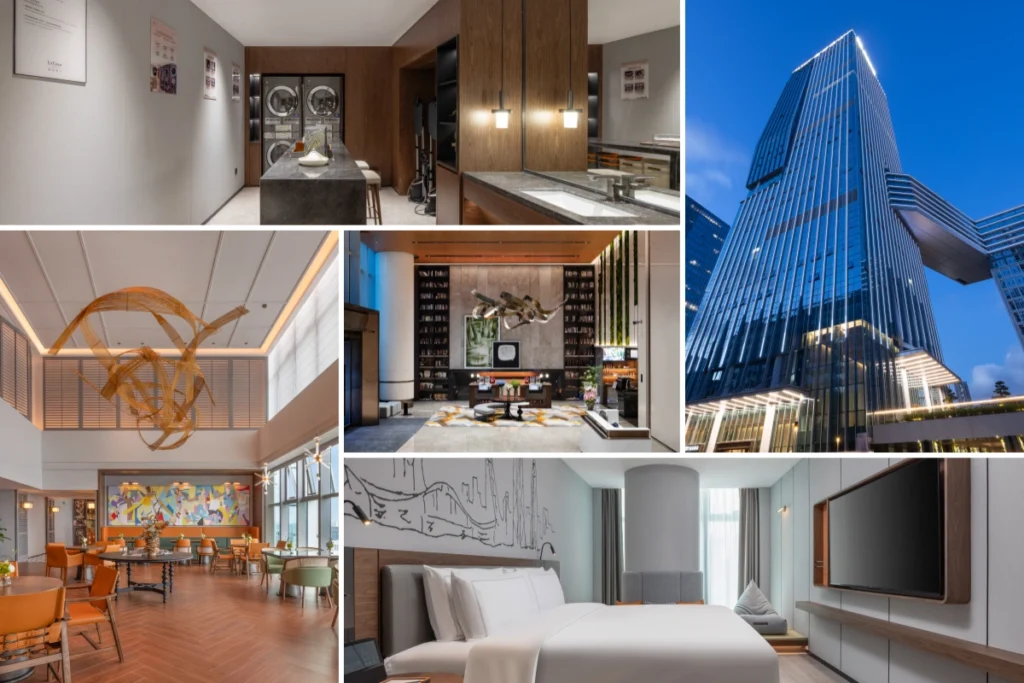
Immersive & Storytelling Spaces
In 2026, boutique hotels are moving beyond simply offering stylish interiors; they are becoming immersive spaces that tell a story. Guests increasingly seek experiences that connect them to a place, culture, or narrative. The strongest boutique hotels design their interiors not only for visual appeal but also to create an emotional journey.
🏺 Design Rooted in Local Culture
A major trend in boutique hotel design is the infusion of regional heritage into interiors. From handcrafted ceramics in Mediterranean boutique hotels to bamboo and rattan accents in Southeast Asia, the use of cultural motifs gives each property a unique identity. This approach transforms boutique hotel interior design into a form of storytelling — each object, material, or pattern becomes part of the narrative.
🛏️ Themed Boutique Hotel Bedrooms
Beyond common areas, boutique hotel bedroom design is becoming more immersive. Hoteliers are experimenting with themed rooms inspired by local legends, art movements, or natural landscapes. For example, a seaside boutique hotel may offer ocean-inspired bedrooms with wave-shaped headboards and calming blue palettes, while an urban property might feature rooms inspired by industrial history with exposed brick and custom artwork. This level of detail makes every stay feel like a once-in-a-lifetime experience.
👂 Engaging the Five Senses
True immersion goes beyond what guests see. Innovative boutique hotel room design now incorporates multi-sensory elements — curated scents that reflect local flora, soundscapes inspired by nature or city life, and tactile materials like raw linen or polished stone. By engaging the five senses, boutique hotels create memories that linger long after check-out.
📖 Storytelling as a Brand Differentiator
Immersive storytelling is not just a design choice; it is also a powerful marketing tool. Hotels that weave storytelling into their interiors can more effectively communicate brand values and stand out in a crowded market. When guests feel emotionally connected to a story, they are more likely to share their experience on social media, driving organic promotion and brand loyalty.
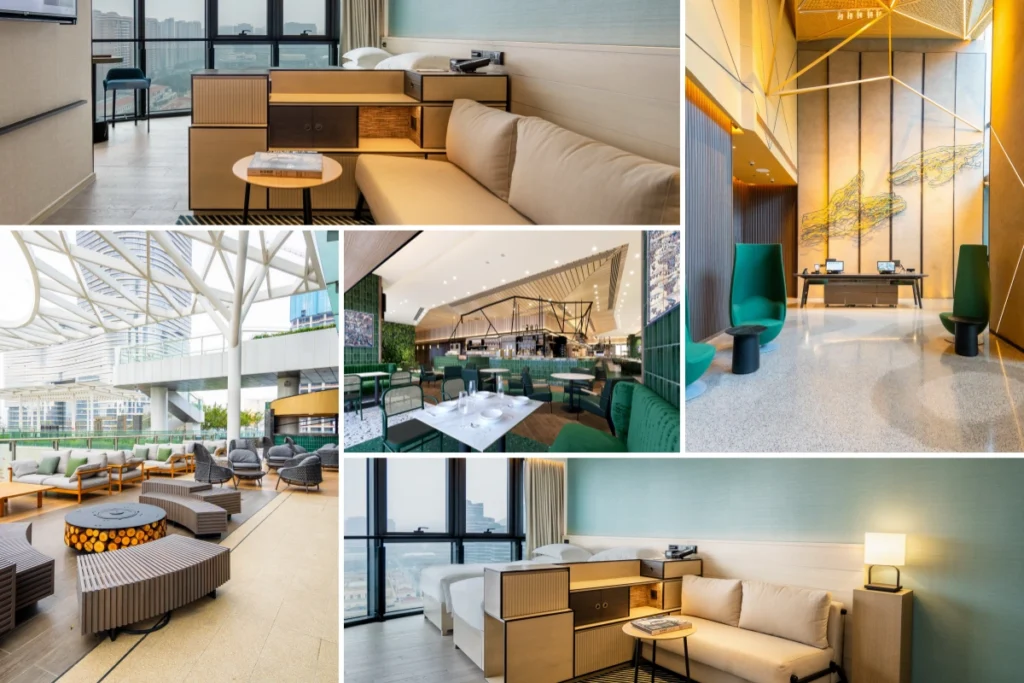
Wellness-Focused Boutique Hotel Bedrooms
Wellness is no longer an optional add-on in hospitality — it is now a core expectation. In 2026, boutique hotels are redefining the bedroom experience to prioritize mental and physical well-being. From sleep-focused features to holistic design elements,boutique hotel bedroom design is evolving into a sanctuary where guests can recharge.
😴 Sleep-Centric Room Design
Restful sleep is at the heart of wellness. Boutique hotels are investing in premium mattresses, blackout curtains, soundproofing, and circadian lighting systems to ensure restorative rest. These features are becoming standard in boutique hotel room design, offering guests a tailored environment that supports their natural sleep cycles. Some properties even allow guests to customize pillow types, mattress firmness, and scent diffusers for a fully personalized experience.
🧘 In-Room Wellness Zones
Beyond sleep, boutique hotels are incorporating mini wellness spaces within rooms. Yoga mats, meditation corners, aromatherapy stations, and even compact fitness equipment are appearing in modern boutique hotel bedroom design. These thoughtful additions encourage guests to maintain their wellness routines while traveling, enhancing overall satisfaction.
🌿 Natural Materials and Biophilic Design
Wellness design also extends to material choices. The use of organic fabrics, breathable linens, indoor plants, and natural wood finishes not only improves air quality but also creates a calming environment. This approach reflects the growing trend of biophilic boutique hotel interior design, where nature is seamlessly integrated into living spaces.
📱 Smart Wellness Technology
Technology is also contributing to wellness. Smart air purifiers, humidity control systems, and sleep-monitoring apps are being discreetly integrated into boutique hotel room design. Guests benefit from healthier environments without sacrificing the boutique charm that makes their stay unique.
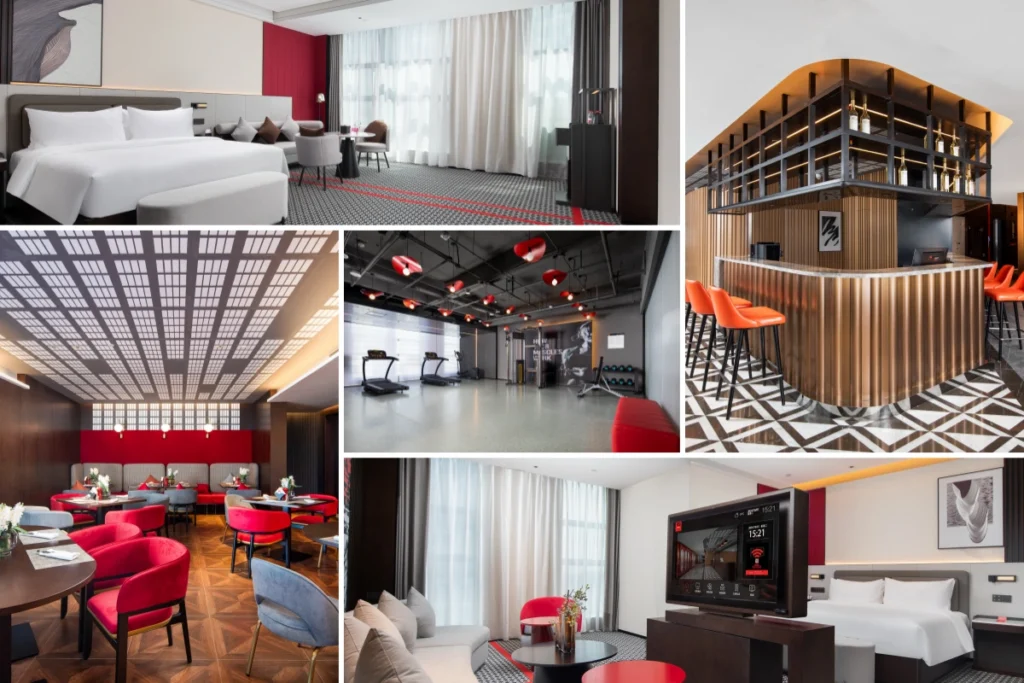
Social Media-Ready Design
In the digital age, design is not just about comfort — it’s also about shareability. For boutique hotels, creating Instagrammable moments is now a powerful marketing strategy. In 2026, successful boutique hotel design will seamlessly blend hospitality with visual storytelling, encouraging guests to become organic brand ambassadors.
✨ Designing for the ‘Wow’ Factor
Guests love to capture and share unique spaces. Statement lighting fixtures, bold wall art, rooftop lounges, and dramatic entryways are becoming design essentials. A hotel lobby that doubles as a photo backdrop or a boutique hotel bedroom design with eye-catching details can significantly increase online visibility.
📸 Instagrammable Boutique Hotel Rooms
Social media–ready interiors go beyond public spaces. Today’s travelers often showcase their accommodations online, making boutique hotel room design a key opportunity for branding. Playful headboards, locally inspired décor, or a styled coffee corner can turn an ordinary room into a highly shareable experience.
🎨 Interactive Spaces for Content Creation
Some boutique hotels are introducing interactive elements such as neon quotes on walls, art installations, or DIY cocktail stations. These create memorable experiences while doubling as content-friendly backdrops. Such design enriches the guest journey and amplifies social media reach.
🌐 Aligning Design with Digital Branding
To be effective, social media–ready design must align with the hotel’s overall brand identity. Whether a property emphasizes minimalist luxury or vibrant local culture, its boutique hotel interior designshould reflect that story across both physical and digital platforms, ensuring every photo reinforces brand recognition.
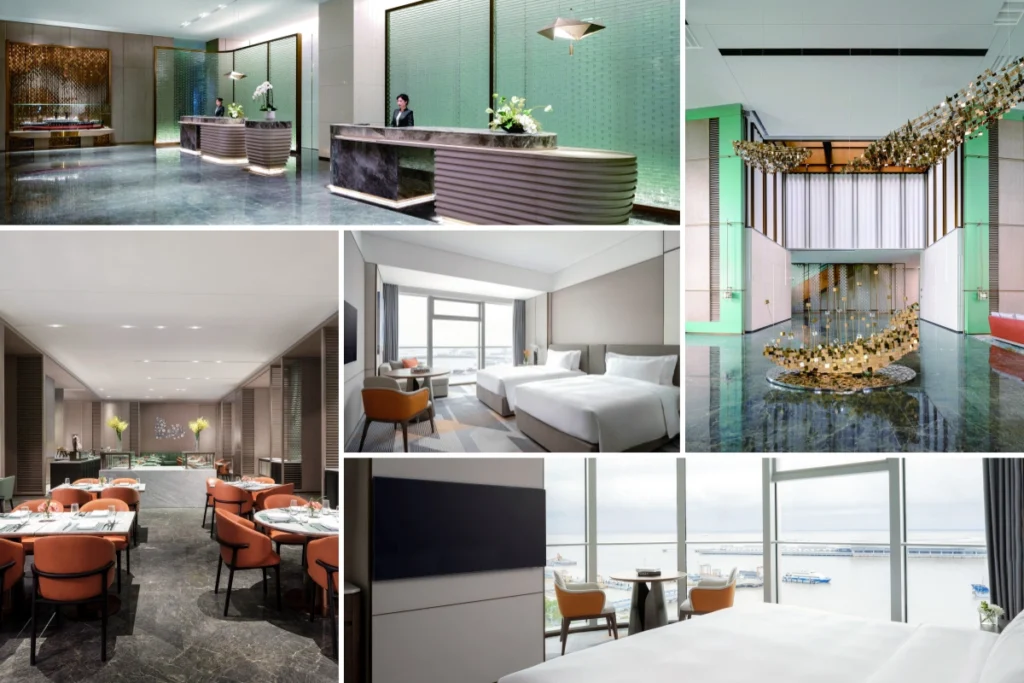
Flexible Multi-Use Spaces
Travel habits are changing, and so are guest expectations. In 2026, boutique hotel design is reimagining spaces to serve multiple functions, allowing travelers to seamlessly transition between work, leisure, and social interaction. This reflects the growing demand for adaptability in modern hospitality.
💼 Work-Play Hybrid Rooms
With remote work becoming a lifestyle, many travelers need rooms that support both productivity and relaxation. Forward-thinking boutique hotel room design integrates ergonomic workstations, high-speed connectivity, and adjustable lighting without compromising on comfort.
🛋️ Transformative Common Areas
Lobbies, lounges, and dining spaces are no longer single-purpose zones. In 2026, boutique hotel interior design emphasizes multi-functional areas that shift from co-working hubs by day to social gathering spots at night with modular layouts.
🛏️ Guest Rooms Beyond Sleeping
Bedrooms now include mini libraries, wellness corners, or entertainment zones. By expanding the role of the boutique hotel bedroom design, hotels create richer experiences that encourage longer stays and repeat visits.
🤝 Design for Community and Privacy
A successfulboutique hotel design balances interaction with retreat. Open-plan spaces foster community, while quiet pods and soundproof corners ensure introverted guests enjoy privacy.
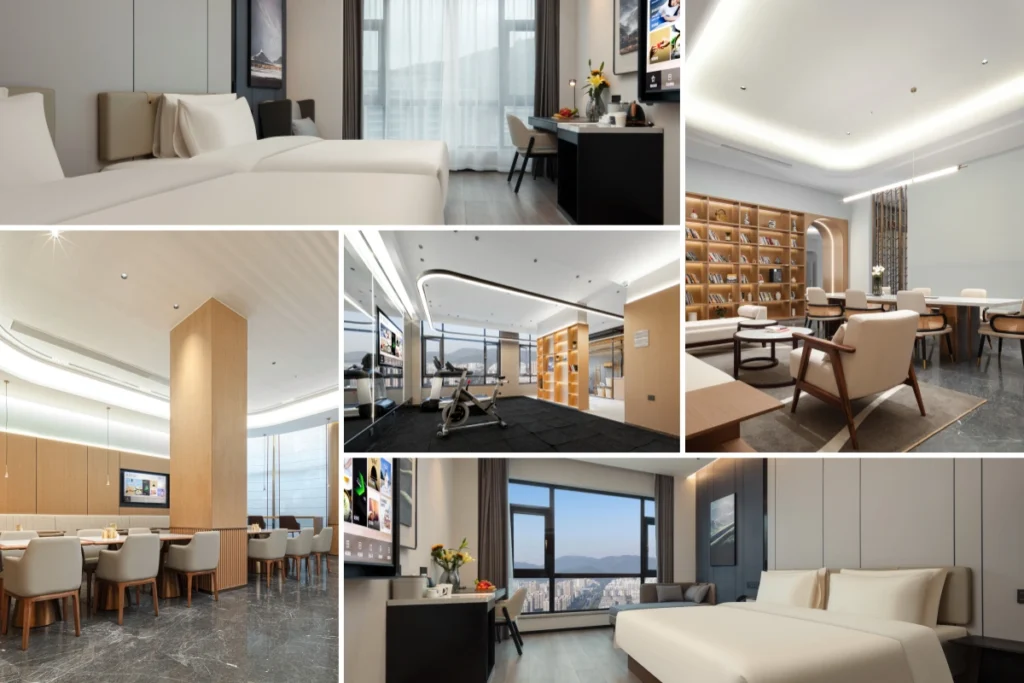
Conclusion: Looking Ahead to Boutique Hotel Design in 2026
As we step into 2026, boutique hotel design is evolving into much more than aesthetics. It’s about blending technology with human warmth, sustainability with luxury, and storytelling with guest wellness. From immersive interiors to wellness-focused bedrooms, boutique hotels that embrace these trends will not only delight their guests but also stand out in an increasingly competitive market.
For hoteliers and designers, the future lies in creating spaces that are flexible, authentic, and memorable. Investing in thoughtful boutique hotel interior design and innovative boutique hotel bedroom design can directly enhance guest satisfaction and brand loyalty.
If you’re looking to bring these ideas to life, choosing the right furniture and décor is a critical step. Explore premium solutions with Censo Home’s hotel furniture collection to discover designs that combine style, comfort, and durability. For more inspiration and design resources, visit Censo Home — your partner in creating boutique hotel spaces that guests will remember long after their stay.

